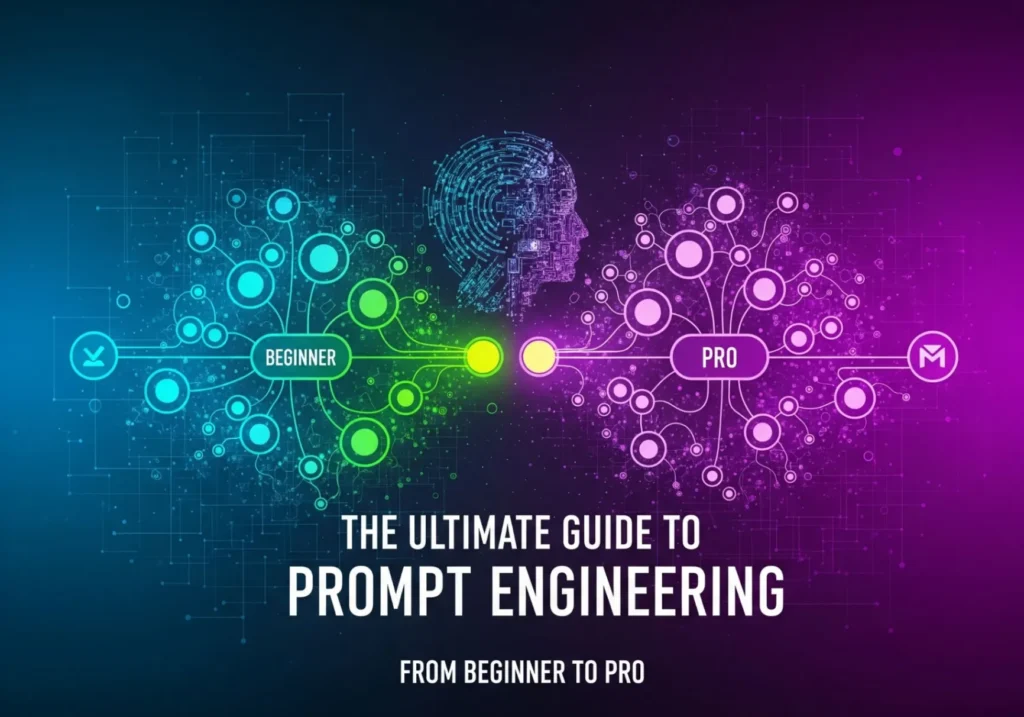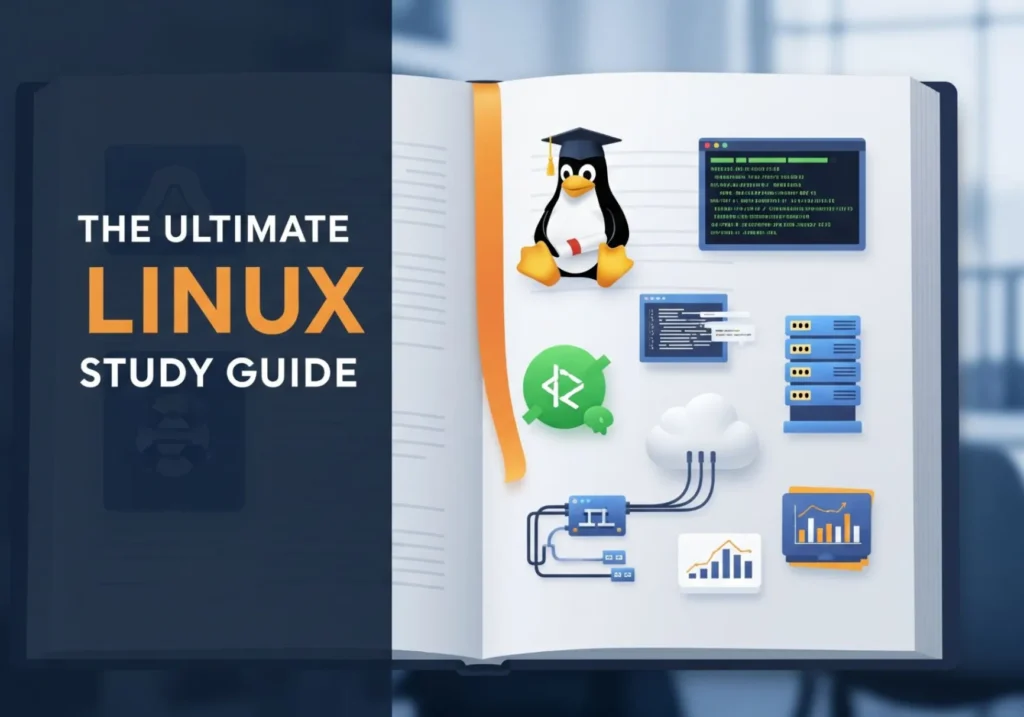The Ultimate Guide to Prompt Engineering: From Beginner to Pro
Welcome to the new frontier of human-computer interaction. If you’ve ever asked ChatGPT a question, told DALL-E to paint a picture, or used any generative AI tool, you’ve already dipped your toes into the world of prompt engineering. But there’s a vast difference between asking a simple question and masterfully crafting a prompt that unlocks the AI’s full potential.
This is your complete, all-in-one guide to leveling up that skill. We’ll take you from the absolute basics—what a prompt even is—to the advanced, pro-level techniques that will make you feel like you have an AI superpower. By the end of this guide, you’ll be able to get precisely what you want from AI, saving time, boosting creativity, and achieving results you never thought possible.
1. What is Prompt Engineering (and Why Should You Care)?
Think of a Large Language Model (LLM) like ChatGPT as an incredibly knowledgeable, powerful, and eager-to-please intern. It has access to a vast amount of information but has zero personal experience or common sense. It will do exactly what you tell it to do.
Prompt engineering is the art and science of crafting instructions (prompts) to guide an AI model toward a desired output. It’s the difference between asking “write about dogs” and getting a generic, boring paragraph, versus asking “Write a 500-word blog post from the perspective of a seasoned veterinarian explaining the top three benefits of crate training for a new puppy, using a warm and reassuring tone.”
Why does it matter?
- Better Results: The quality of your output is directly proportional to the quality of your input.
- Increased Efficiency: A great prompt gets you the right answer on the first try, saving you from endless revisions.
- Unlocks Creativity: It allows you to use AI not just for information retrieval, but as a creative partner for brainstorming, writing, and problem-solving.
- Control and Precision: You can dictate the tone, style, length, format, and complexity of the AI’s response.
Mastering this skill is no longer optional; it’s a fundamental part of digital literacy in the age of AI.
2. The Beginner’s Toolkit: Core Principles of Great Prompts
Before we get into complex techniques, let’s master the fundamentals. These five principles form the bedrock of every successful prompt.
Clarity and Specificity: Don’t Be Vague
This is the golden rule. The AI cannot read your mind. You must be explicit about what you want.
Tell me about electric cars.
Explain the key differences between Battery Electric Vehicles (BEVs) and Plug-in Hybrid Electric Vehicles (PHEVs) for a non-technical audience. Focus on charging, range, and maintenance.
Context is King: Provide Background Information
The AI doesn’t know the background of your request. Giving it context dramatically improves the relevance of its response.
Write a follow-up email.
I just had a sales call with a potential client named Sarah from a company called “Innovate Corp.” We discussed their need for a social media management tool. Write a polite, concise follow-up email that summarizes our discussion, attaches our brochure (mention this as `[ATTACHMENT]`), and suggests a follow-up meeting next Tuesday.
Assign a Persona (The “Act As” Trick)
Telling the AI *who* it should be is one of the most powerful techniques. This frames its knowledge and sets its tone and style.
Explain quantum computing.
Act as a science communicator, like Carl Sagan or Neil deGrasse Tyson. Explain the core concept of quantum computing to a high school student. Use analogies related to coins and light switches to make it easy to understand. Avoid complex mathematical formulas.
Define the Format: Tell It How You Want It
Do you want a paragraph, a list, a table, or JSON code? Specify the output format to save yourself a ton of reformatting work.
What are the pros and cons of remote work?
Create a markdown table that compares the pros and cons of remote work for both employees and employers. The table should have three columns: “Aspect”, “Benefit/Pro”, and “Drawback/Con”.
Use Constraints: Set the Boundaries
Guide the AI by telling it what *not* to do, or by setting specific limits. This helps to avoid irrelevant information and keep the response focused.
Give me some marketing ideas.
Brainstorm five unique marketing ideas for a new brand of eco-friendly coffee beans. The target audience is millennials aged 25-35. The ideas should be low-budget and focus on social media engagement. Do not suggest paid ads or influencer marketing.
3. Intermediate Techniques: Leveling Up Your Game
Once you’ve mastered the basics, you can start using more structured prompting techniques to tackle complex tasks.
Few-Shot Prompting: Teach with Examples
Sometimes, the best way to explain a task is to show the AI a few examples of what you want. This is called “few-shot prompting.”
- Zero-Shot: You ask the AI to do a task without any examples. (e.g., “Classify this tweet’s sentiment as positive, negative, or neutral.”)
- One-Shot: You provide one example.
- Few-Shot: You provide multiple examples.
This is incredibly effective for tasks involving classification, style imitation, or data formatting.
Example: Sentiment Analysis
Classify the sentiment of the following user reviews as 'Positive', 'Negative', or 'Neutral'.
Review: "The battery life on this phone is amazing!"
Sentiment: Positive
Review: "The package arrived a day late."
Sentiment: Neutral
Review: "The screen cracked after I dropped it just once. Very disappointed."
Sentiment: Negative
Review: "I guess the camera is okay, but the software is a bit slow."
Sentiment:By providing examples, you’ve trained the model on the fly to understand your specific criteria for each category, leading to a much more accurate classification for the final review.
Chain-of-Thought (CoT): Make the AI “Think”
For complex reasoning, logic puzzles, or math problems, simply asking for the answer can lead to errors. Chain-of-Thought (CoT) prompting encourages the AI to break down the problem and “show its work.”
The magic phrase is often as simple as: “Let’s think step by step.”
If a farmer has 150 apples and sells 20% to a store, then gives 1/3 of the remainder to his neighbor, how many apples does he have left? Give me the final number.
If a farmer has 150 apples and sells 20% to a store, then gives 1/3 of the remainder to his neighbor, how many apples does he have left? Let’s think step by step to find the solution.
AI Response (Good Prompt):
Of course, let’s break it down step by step.
1. Start with the initial number of apples: 150 apples.
2. Calculate 20% of 150: 0.20 * 150 = 30 apples. These are sold to the store.
3. Calculate the remaining apples: 150 – 30 = 120 apples.
4. Calculate 1/3 of the remainder: (1/3) * 120 = 40 apples. These are given to the neighbor.
5. Calculate the final number of apples: 120 – 40 = 80 apples.
Therefore, the farmer has 80 apples left.
By forcing the AI to reason sequentially, you dramatically increase its accuracy on multi-step problems.
The Recipe Pattern: A Structured Approach
For large, repeatable tasks like writing blog posts or reports, it’s helpful to structure your prompt like a recipe.
- Role: Who the AI should be.
- Task: The primary goal.
- Context: Background information, target audience.
- Steps/Instructions: A clear, ordered list of actions to take.
- Format: The desired output structure.
- Constraints: Things to avoid or adhere to.
**Role:** Act as an expert SEO content strategist.
**Task:** Write a complete, SEO-optimized blog post.
**Context:** The topic is "The Benefits of Indoor Plants for Mental Well-being." The target audience is young professionals living in apartments. The goal is to provide actionable tips and be encouraging.
**Instructions:**
1. Start with a catchy H1 title.
2. Write a brief, engaging introduction that hooks the reader.
3. Create an H2 section titled "More Than Just Decoration: The Science-Backed Benefits."
4. Under this section, detail 3 key benefits (e.g., stress reduction, improved focus, air purification). Use H3s for each benefit.
5. Create another H2 section titled "Top 5 Easy-Care Plants to Get You Started."
6. List 5 plants (e.g., Snake Plant, Spider Plant) with a short description of their care needs.
7. Conclude with a summary and an encouraging call-to-action.
**Format:** The output should be in Markdown format, ready to be copied into a CMS.
**Constraints:** The total word count should be between 800-1000 words. Maintain a positive and supportive tone. Do not mention any specific brands or stores.4. Advanced Strategies: The Pro’s Playbook
These techniques require more interaction and are used to solve highly complex or nuanced problems, pushing the boundaries of what AI can do.
Self-Critique: The Reflective AI
This powerful technique involves having the AI generate a response and then asking it to critique and improve its own work. It forces the model to evaluate its output against a set of criteria, leading to a much more refined final product.
Two-Step Process:
- Initial Prompt: “Draft a marketing slogan for a new luxury electric car.”
- Critique and Refine Prompt: “Now, analyze the slogan you just created. Is it memorable? Does it convey luxury and sustainability? Is it unique? Based on your critique, provide three improved versions.”
This creates an iterative loop where the AI acts as both creator and critic, significantly elevating the quality of the final output.
Generated Knowledge Prompting
Sometimes, an AI might not have immediate access to, or might “hallucinate,” specific facts needed to answer a complex question. You can solve this by first asking the AI to generate the knowledge it needs, and then use that knowledge to answer the actual question.
Example:
- Knowledge Generation Prompt: “What are the key economic principles that influenced John Maynard Keynes’s theories? List 3-4 of the most important ones.”
- Main Prompt (using the AI’s previous output): “Using the principles you just listed [paste the AI’s output here], explain in simple terms how Keynesian economics proposes to manage an economic recession.”
This “primes” the model with accurate, relevant information, preventing it from making errors and ensuring the final answer is well-founded.
An Introduction to Tree of Thoughts (ToT)
Tree of Thoughts is a cutting-edge technique that mimics human problem-solving more closely. Instead of a single chain of thought, it encourages the AI to explore multiple different reasoning paths (branches of a tree), evaluate them, and then synthesize the best path forward.
While fully automating ToT is complex, you can simulate it manually:
**Initial Problem:** "I need to plan a 3-day team-building retreat for a remote team of 20 people with a budget of $10,000. What are some possible itineraries?"
**Simulated ToT Prompt:**
"Generate three distinct and different high-level concepts for this retreat.
1. **Concept A (Adventure Focus):** Focus on outdoor activities like hiking and rafting.
2. **Concept B (Relaxation Focus):** Focus on a spa, workshops, and fine dining.
3. **Concept C (Urban Exploration):** Focus on a city-based retreat with cultural tours and activities.
For each concept, briefly list the pros and cons regarding budget, logistics for a remote team, and team-building effectiveness. Then, conclude by recommending which concept seems most viable and why."This forces the AI to deliberate and weigh alternatives instead of just giving the first answer it finds, leading to more strategic and well-considered solutions.
5. Prompting for Different Use Cases
The principles are universal, but the application varies. Here’s how to tailor your prompts for specific tasks.
Content Creation (Blogs, Emails, Social Media)
Focus on Persona, Tone, and Audience. These elements are critical for creating content that resonates.
Act as a witty and engaging social media manager. Write 3 tweets announcing our new productivity app, ‘Zenith Focus’. The tone should be slightly humorous and relatable for a burned-out professional audience. Include the hashtag #ProductivityHacks and a call-to-action to download the app.
Coding and Development
Be extremely precise. Mention the programming language, libraries, and desired functionality. Provide code snippets for context when debugging.
Using Python and the Pandas library, write a function called `clean_dataframe` that takes a DataFrame `df` as input. The function should perform two actions: 1) Fill any missing values in the ‘Age’ column with the median age. 2) Drop any rows where the ‘Email’ column is null. Return the cleaned DataFrame.
Image Generation (Midjourney, DALL-E)
Image prompts are a unique art form. The key components are:
- Subject: The main focus (e.g., “a wise old owl wearing glasses”).
- Style: The artistic medium (e.g., “digital painting,” “cinematic photo,” “Studio Ghibli anime style”).
- Composition & Lighting: How the shot is framed (e.g., “wide angle shot,” “dramatic backlighting,” “golden hour”).
- Details & Mood: Adjectives to set the scene (e.g., “serene,” “futuristic,” “mystical forest”).
- Parameters: Technical commands (e.g., `–ar 16:9` for aspect ratio in Midjourney).
cinematic photo of an astronaut sitting in a retro, 1970s-style diner on Mars, looking out the window at the red landscape, nostalgic mood, warm neon lighting, hyperrealistic, detailed, 8k --ar 16:96. The Prompt Engineer’s Workflow: A Cycle of Improvement
Great prompts are rarely written on the first try. Professionals use an iterative workflow:
- Define the Goal: Be crystal clear about what you want to achieve. What does a “perfect” output look like?
- Draft the Initial Prompt: Write your first version using the core principles (clarity, context, persona, etc.).
- Execute and Analyze: Run the prompt and carefully examine the output. Where did it succeed? Where did it fail? Did it misunderstand a term? Was the format wrong?
- Refine and Iterate: Tweak your prompt based on your analysis. Add more context, clarify an instruction, provide an example (few-shot), or rephrase a command.
- Repeat: Continue this cycle until you achieve the desired result. Save your successful prompts in a library for future use!
Key Takeaway: Iteration is Everything
Don’t get discouraged if your first prompt doesn’t work perfectly. The magic of prompt engineering lies in the process of refinement. Each iteration gets you closer to a masterpiece.
7. Common Pitfalls and How to Avoid Them
- Ambiguity: Using words with double meanings or being too general. Fix: Be as specific and literal as possible.
- Assuming Knowledge: The AI doesn’t know your company’s internal jargon or the context of your last conversation. Fix: Always provide necessary background information within the prompt.
- Overly Complex Prompts: Trying to do too many things in a single, convoluted prompt. Fix: Break down complex tasks into a series of simpler prompts.
- Ignoring a Bad Output: Simply accepting a mediocre response. Fix: Always ask “How can I change my prompt to make this better?” and iterate.
- Trusting Implicitly: Forgetting that AIs can “hallucinate” or make up facts. Fix: Always fact-check critical information, especially data, names, and dates.
8. Conclusion: Your Journey Starts Now
Prompt engineering is not a dark art; it’s a learnable skill that transforms AI from a novelty into an indispensable tool. By moving from simple questions to structured, thoughtful instructions, you are no longer just a user—you are a collaborator.
Start with the basics: be clear, provide context, assign a persona, define the format, and set constraints. Practice with intermediate techniques like few-shot prompting and chain-of-thought. As you grow, experiment with advanced strategies to tackle truly complex challenges.
The best way to learn is by doing. So take these techniques, open up your favorite AI tool, and start experimenting. The power to create, innovate, and solve problems is literally at your fingertips. All you have to do is ask in the right way.
9. Frequently Asked Questions (FAQ)
What is the difference between a prompt and prompt engineering?
A “prompt” is simply the instruction you give to an AI. “Prompt engineering” is the skill and process of carefully designing, refining, and optimizing that instruction to get the best possible result.
Is prompt engineering a real job?
Yes, absolutely. Many companies are now hiring “Prompt Engineers” or “AI Interaction Specialists” to create and manage the prompts that power their AI-driven products and internal workflows. However, it’s also becoming a crucial skill for almost every knowledge worker, not just a dedicated role.
Do I need to know how to code to be good at prompt engineering?
No! While understanding logic helps, the core of prompt engineering is about clear communication, creativity, and critical thinking. It’s more about language and instruction than it is about programming, unless you’re specifically prompting for code generation.
Which AI tool is the best to practice with?
For text-based tasks, models like OpenAI’s ChatGPT (GPT-4), Google’s Gemini, and Anthropic’s Claude are all excellent platforms to practice these techniques. For image generation, Midjourney and DALL-E 3 (integrated with ChatGPT Plus) are industry leaders.





Thank you a lot for sharing this with all folks you really recognize what you are talking approximately! Bookmarked. Kindly also talk over with my site =). We can have a hyperlink trade contract among us!
I’m not that much of a internet reader to be honest but your blogs really nice, keep it up! I’ll go ahead and bookmark your website to come back in the future. Many thanks
Thanks for your appreciation.
Hello there! This is kind of off topic but I need some advice from an established blog. Is it very hard to set up your own blog? I’m not very techincal but I can figure things out pretty fast. I’m thinking about making my own but I’m not sure where to begin. Do you have any points or suggestions? Thanks
Yay google is my king assisted me to find this outstanding internet site! .
Thanks.
This is the right blog for anyone who wants to find out about this topic. You realize so much its almost hard to argue with you (not that I actually would want…HaHa). You definitely put a new spin on a topic thats been written about for years. Great stuff, just great!
Thanks for the appreciation you have made by posting your comments or thoughts to encourage me and others to share their opinions about this site.
Hello. remarkable job. I did not expect this. This is a impressive story. Thanks!
Hiya, I am really glad I have found this info. Today bloggers publish just about gossips and web and this is actually irritating. A good site with exciting content, this is what I need. Thanks for keeping this web site, I’ll be visiting it. Do you do newsletters? Can not find it.